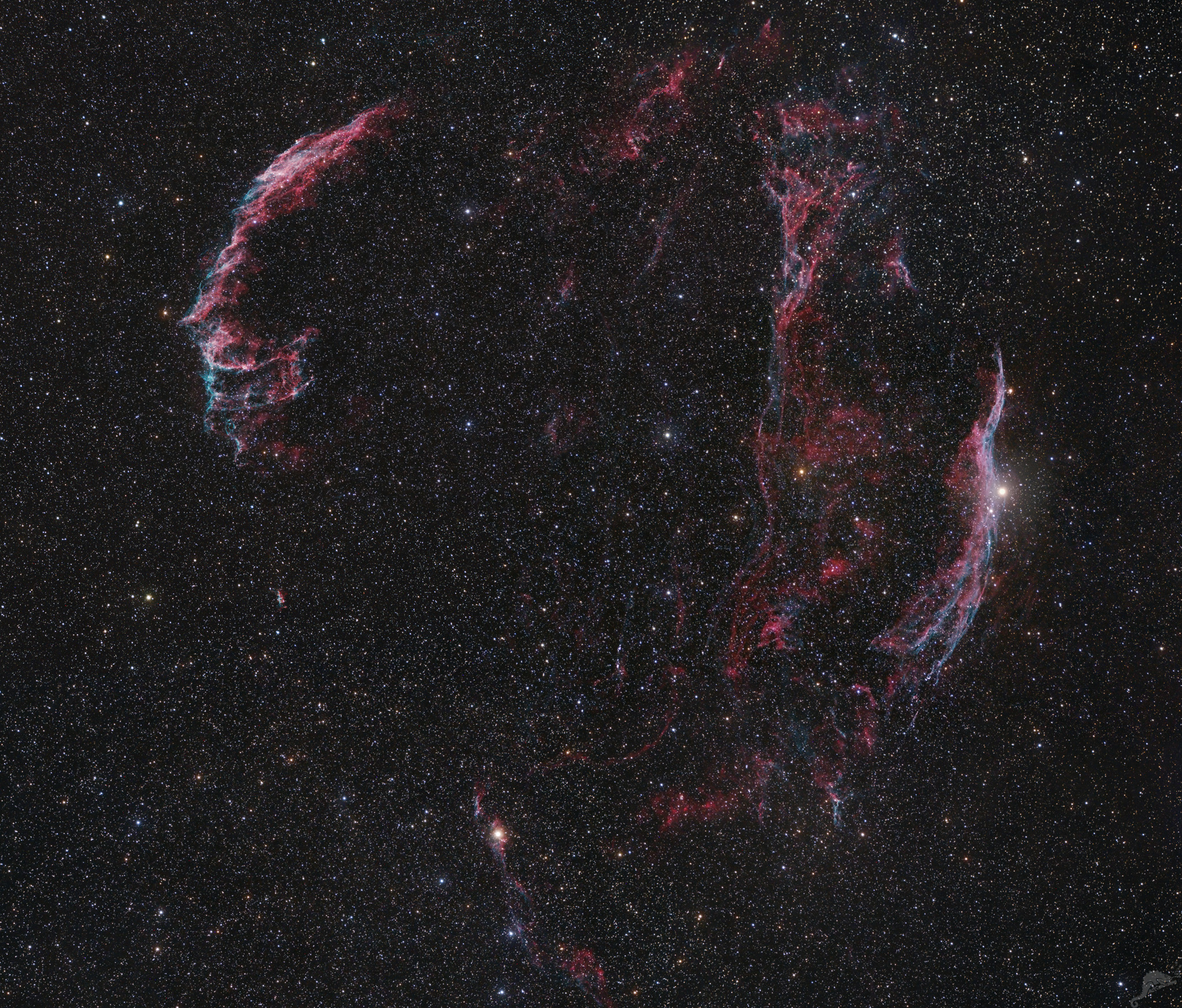The Cirrus Nebula in the constellation Swan (Cygnus)
The Cirrus Nebula is built from the ejected gas masses of a supernova explosion about 8000 years ago. The gases move away from the explosion site at a high velocity and collide with the interstellar medium. Fine filaments form at the collision fronts, which are ionized by the collision energy and emit light. A compact remnant of the exploded star (neutron star, pulsar or black hole) could not be found so far.

| Date: | 2019 – 2022 |
| Optics: | Pentax SDP 105 with 0.72x reducer |
| Aperture: | 105 mm |
| Focal Length: | 510 mm |
| Camera: | Canon EOS 700Dac |
| Exposure: | 6-frame mosaic together 140 x 300 s |
| Location: | Chamaeleon Observatory, Onjala Lodge, Namibia |
| Processing: | DeepSkyStacker, Nebulosity, Photoshop |
| Diameter: | 130 light years |
| Distance: | 2,400 light years |

